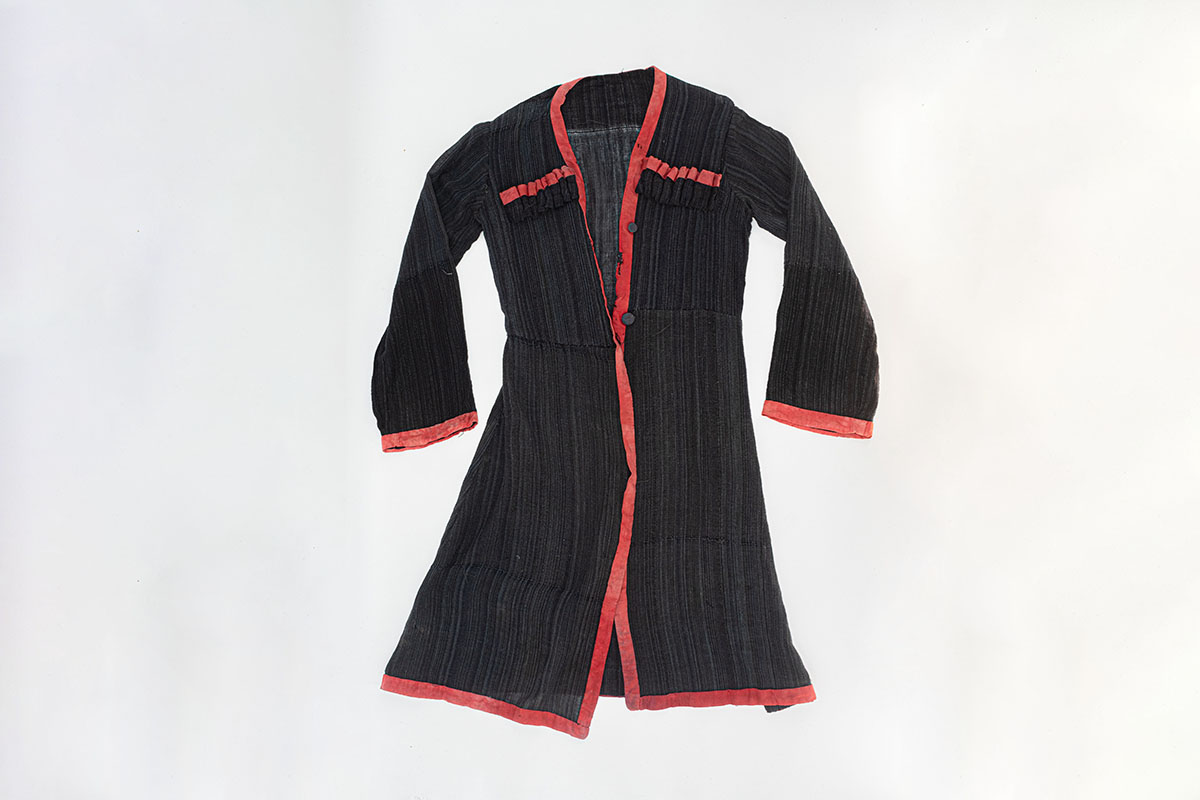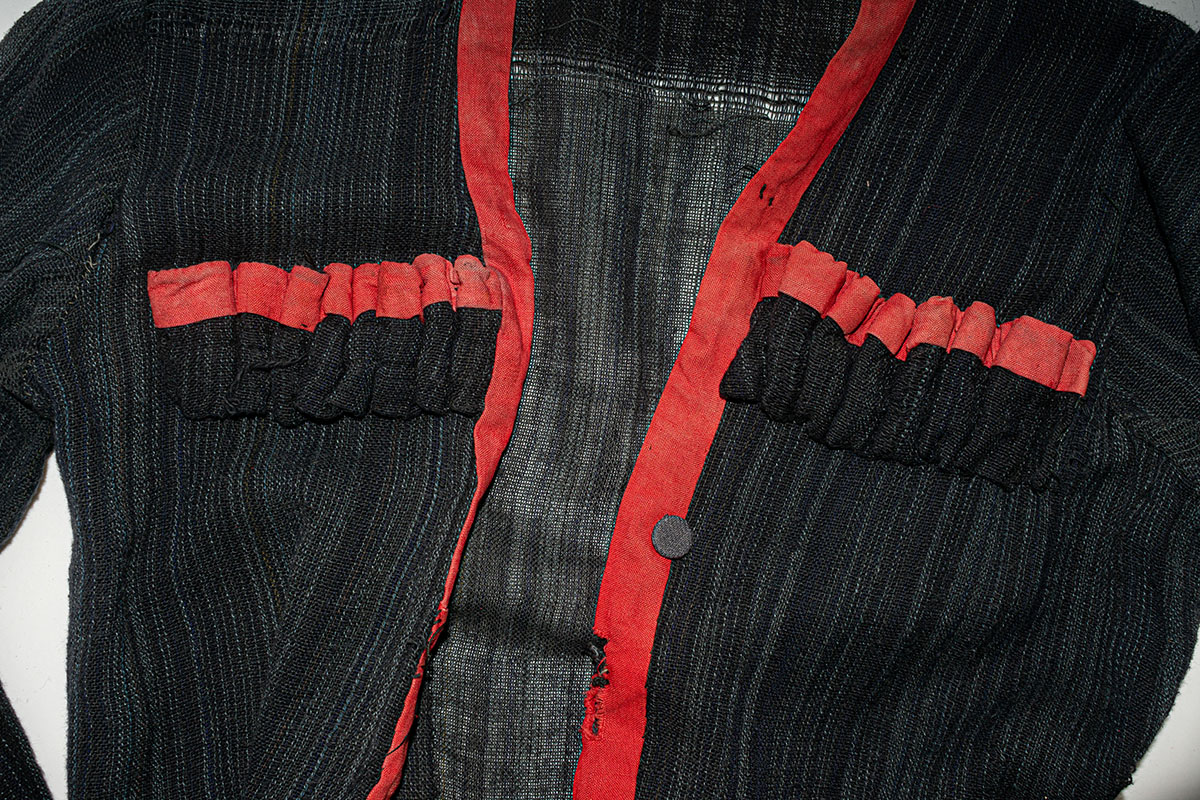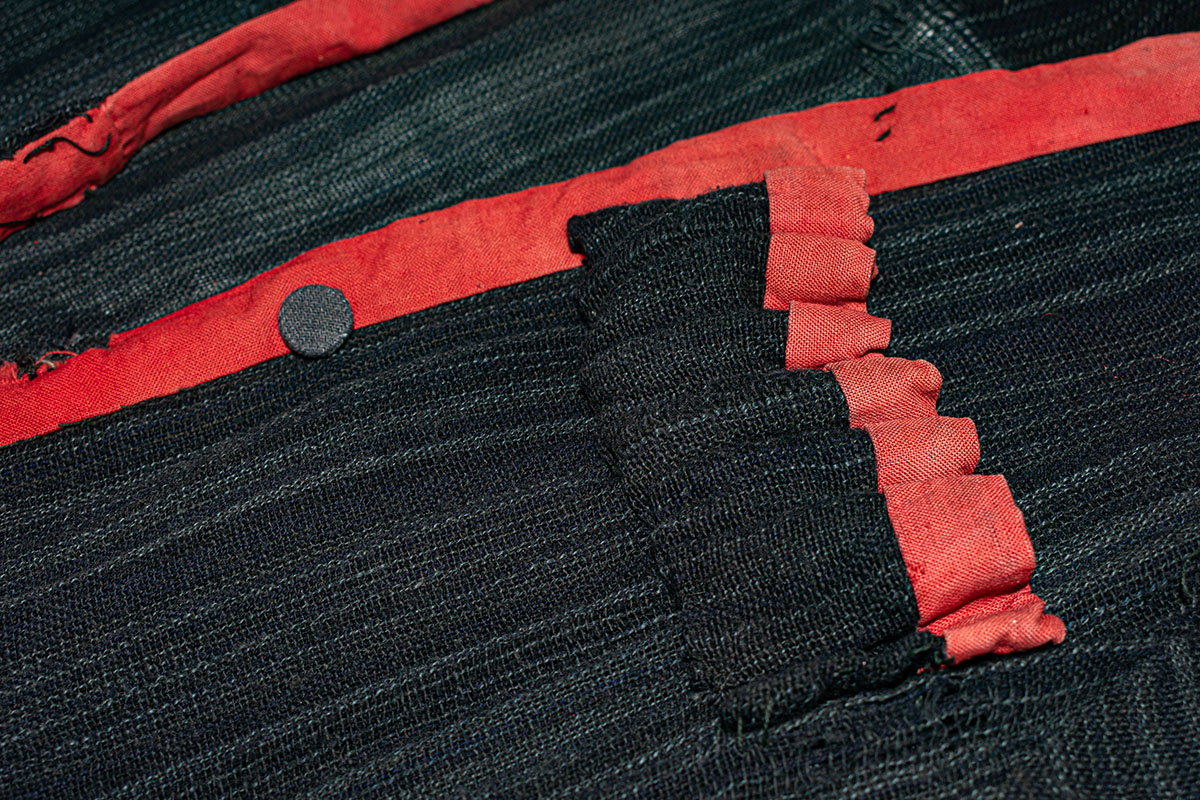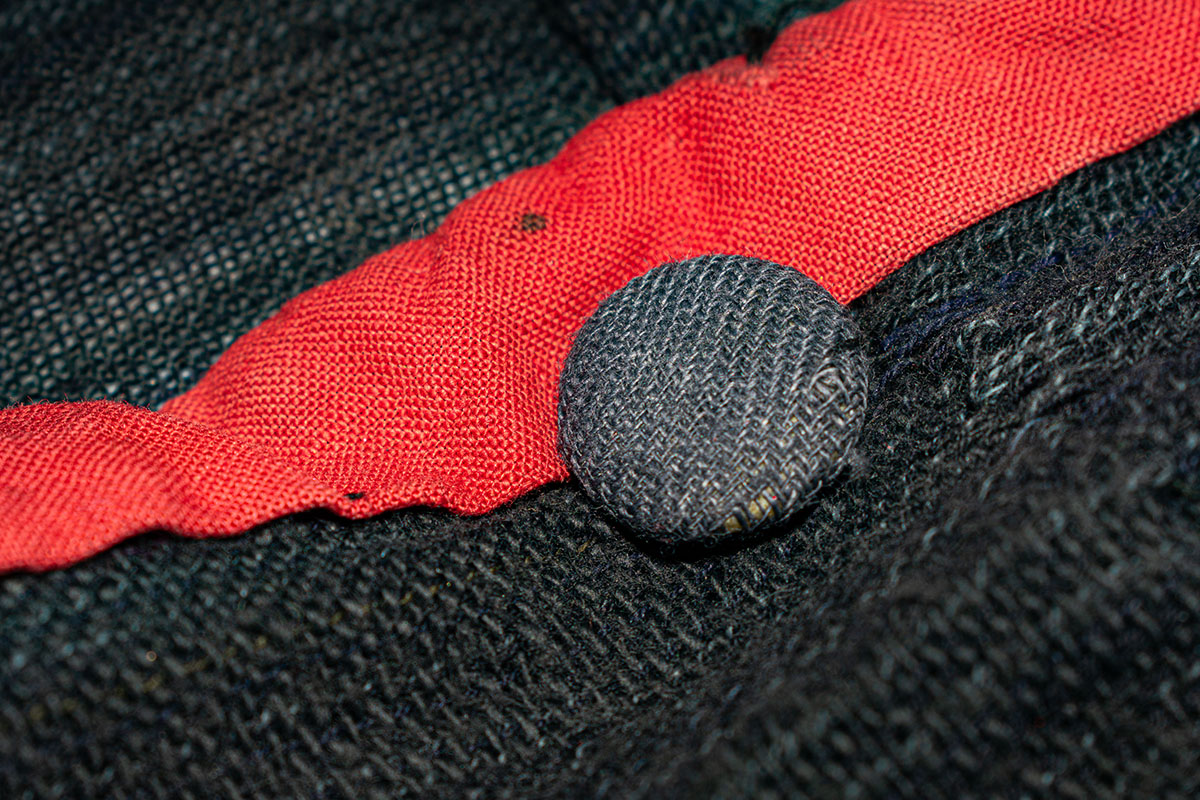This costume belonged to Oleksandra Maksymivna Shuleshko, who used it during a New Year’s performance at a children’s orphanage. In her efforts to help homeless children during the German occupation, Oleksandra opened an orphanage in the city of Cherkasy with the permission of the local Gebietskommissar and even secured funding from the German authorities. She also organized a small household economy, involving the children in its maintenance. She accepted all who needed help, regardless of background. Jewish children were registered as Ukrainians, Greeks, Armenians, or Tatars—depending on whom they resembled most.
In 1942, during the New Year’s celebration at the orphanage, which was attended by the Gebietskommissar of Cherkasy, Oleksandra used the occasion to disguise the Jewish children among the others. Thanks to carnival costumes, masks, and makeup, the performance went smoothly. During the German retreat, part of the orphanage’s children were forcibly evacuated, but Oleksandra cleverly managed to return all of them. Despite her wartime merits, the Soviet authorities suspected her of collaborating with the Nazis and prohibited her from working in her profession until 1968. Oleksandra Shuleshko died in 1994. During the war, she saved 102 children, 25 of whom were Jewish. In 1996, she was recognized as Righteous Among the Nations.
he costume is made in the style of a chokha—a traditional outer garment worn by men in the Caucasus region. It is sewn from gauze dyed black. The garment is slightly fitted at the waist and flares at the bottom, with long sleeves and no collar. On the upper chest area, red fabric gazyrs are sewn on both sides, each designed to hold eight cartridges. All edges of the costume are trimmed with red fabric. It fastens with two black fabric-covered plastic buttons.



